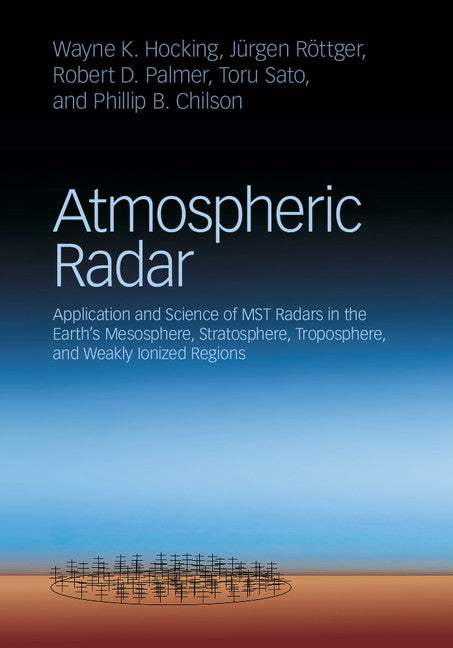Freshly Printed - allow 4 days lead
Couldn't load pickup availability
Atmospheric Radar
Application and Science of MST Radars in the Earth's Mesosphere, Stratosphere, Troposphere, and Weakly Ionized Regions
The first book to bring together the theory, design, and applications of atmospheric radar systems.
Wayne K. Hocking (Author), Jürgen Röttger (Author), Robert D. Palmer (Author), Toru Sato (Author), Phillip B. Chilson (Author)
9781107147461, Cambridge University Press
Hardback, published 17 November 2016
854 pages, 193 b/w illus. 132 colour illus.
25.5 x 18.4 x 4 cm, 1.82 kg
Richly illustrated, and including both an extensive bibliography and index, this indispensable guide brings together the theory, design, and applications of atmospheric radar. It explains the basic thermodynamics and dynamics of the troposphere, stratosphere, and mesosphere, and discusses the physical and engineering principles behind one of the key tools used to study these regions - MST radars. Key topics covered include antennas, signal propagation, and signal processing techniques. A wide range of practical applications are discussed, including the use of atmospheric radar to study wind profiles, tropospheric temperature, and gravity waves. A detailed overview of radar designs provides a wealth of knowledge and tools, providing readers with a strong basis for building their own instruments. This is an essential resource for graduate students and researchers working in the areas of radar engineering, remote sensing, meteorology, and atmospheric physics, as well as for practitioners in the radar industry.
1. An overview of the atmosphere
2. The history of radar in atmospheric investigations
3. Refractive index of the atmosphere and ionosphere
4. Fundamental concepts of radar remote sensing
5. Configurations of atmospheric radars - antennas, beam patterns, electronics and calibration
6. Examples of specific atmospheric radar systems
7. Derivation of atmospheric parameters
8. Digital processing of doppler radar signals
9. Multiple-receiver and multiple-frequency radar techniques
10. Extended and miscellaneous applications of atmospheric radars
11. Gravity waves and turbulence
12. Meteorological phenomena in the lower atmosphere
13. Concluding remarks.
Subject Areas: Microwave technology [TJFN], Electronics engineering [TJF], Electronics & communications engineering [TJ], Technology, engineering, agriculture [T]


